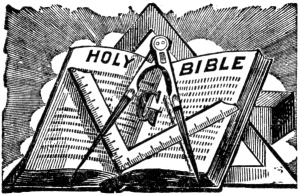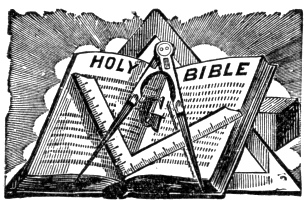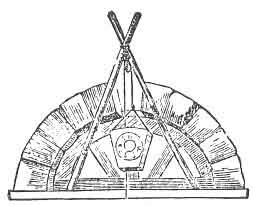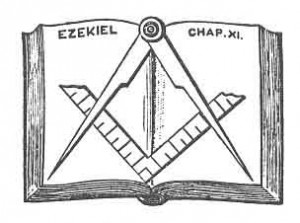113:1 CASSIA–sometimes improperly and ignorantly used for acacia. (See ACACIA.) According to the Jewish law, no interments were permitted within the walls of the city, and as it was unlawful for the cohens or priests to pass over a grave, it became necessary to place marks wherever a dead body had been interred, to enable them to avoid it. For this purpose the ACACIA was used.–Lexicon.
113:2 Brother Goodacre, of the Witham Lodge, Lincoln, suggests that the various penalties which have been introduced into Freemasonry appear to have reference to a particular kind of covenant which was common among the Hebrews. but which, he adds, “I can find only twice particularly described. Godwyn says: ‘Making a covenant was a solemn binding of each other to the performance of a mutual promise, by outward ceremonies of cutting a beast in twain, and passing between the parts thereof’ (Jer. xxxiv. .18); as if they would say–Thus let it be done to him, and thus let his body be cut in two, who shall break this covenant. This reference to Jeremiah, where the prophet denounced the curse of the Lord upon the Princes and rulers who had broken the covenant which they had made with King Zedekiah, may explain the self-imposed penalty of J—— (Jubelum).” But we must look a little closer into the manner of making a covenant, in order to discover the connection of the different penalties as references to one entire ceremony. After an animal had been selected, his throat was cut across with one single blow, so as to divide the windpipe, arteries, and veins, without touching any bone. The next ceremony was to p. 114 tear the breast open and pluck out the heart, and if there were the least imperfection, the body would be considered unclean. The animal was then divided into two parts, and placed north and south, that the parties to the covenant may pass between them from east to west, and the carcase was then left as a prey to voracious animals. The other example of such a covenant is in Genesis xv.–Historical Landmarks, vol. ii. p. 178.
115:1 Their real names (if there be any thing real in the whole transaction, which is more than doubtful), as preserved in a subsidiary degree. were GRAVELOT, QUIBO, and AKIROP. In one form of the Degree of Elect of Fifteen, they assume the Protean names of JUBELA-KURMAVIL (another corruption of Cromwell), JUBELO-GRAVELOT, and JUBELUM-AKIROP.–The Freemason’s Treasury, pp. 305-6.
116:1 The occasion of the brethren searching so diligently for their Master was, to receive from him the secret word of Masonry, which should be delivered down as a test to the fraternity of after ages.–Historical Land marks, vol. ii. p. 175.
120:1 Respecting the lost word and its substitute, some say that King Solomon advised the change, while others affirm that the three Fellow Crafts adopted the substituted word without consulting him. And Dalcho observes that the interpolated word is not to be found in any language that ever was used. It is, in fact, not a word, but merely a jumble of letters, forming a sound without meaning.”–The Freemason’s Treasury, p. 301.
124:1 Can any living Mason be simple enough to believe that Dr. Anderson, in his “Defence of Masonry,” intended to prove a real historical fact when he explained the exhumation of the body of H. A. B.? Why, it is well known that the celebrated artist was living at Tyre many years after the Temple was completed.–The Freemason’s Treasury, p. 291.
126:1 Among such a vast concourse of people as were assembled together at the construction of this edifice, it is natural to expect every variety of propensities, both good and evil. Accordingly our traditions furnish in stances, both among the Apprentices and Craftsmen, of treachery–violation of sacred pledges–and the commission of actual crime. . . These instances, some of which have been thought worthy of preservation in the ineffable Degrees, were not numerous. . . From the above causes. however, the connection of the widow’s son with the building of the Temple was endeared to the two monarchs; and, to preserve and consecrate his memory, a new arrangement of discipline was adopted; and a legend incorporated into the system, which served to promote a similar object with the fabulous narrative used in the spurious initiations, viz., to inculcate and impress on the candidate’s mind the doctrine of a resurrection and a future state–Theo. Phil., p. 232.

Moe is the founder of GnosticWarrior.com. He is a father, husband, author, martial arts black belt, and an expert in Gnosticism, the occult, and esotericism.






